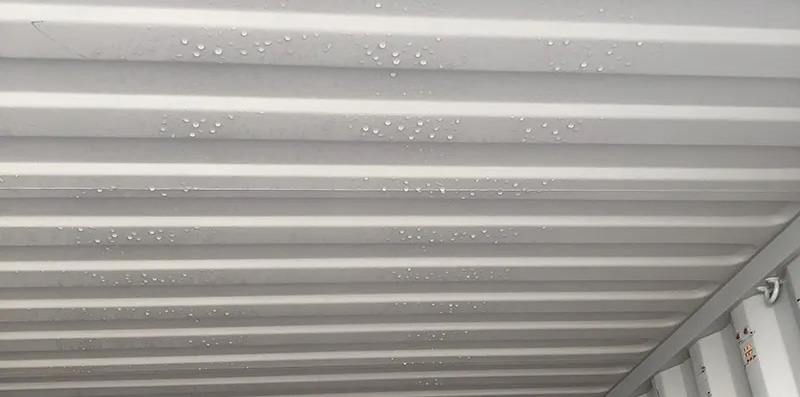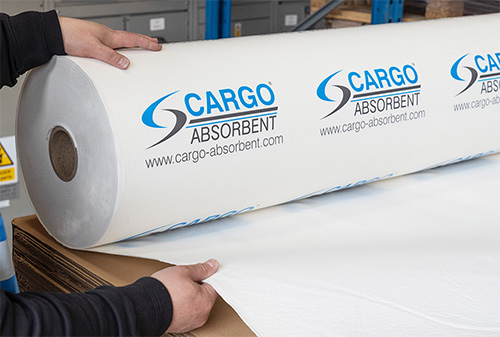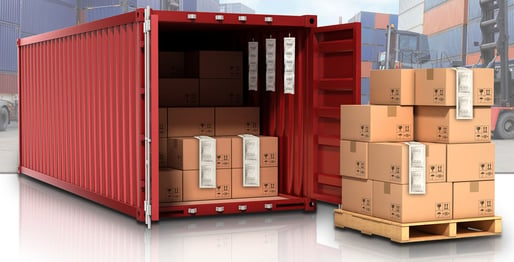It has happened to everybody; you spend quality time and care packing up your valuable goods for transit, ensuring that there is absolutely no way for damage to occur to what has been so meticulously enclosed inside the box… only to be told a few weeks later that your product has indeed been ruined by moisture whilst in shipment.
And it never is a nice thing to hear.
Container rain
Did you know that, each year, approximately 10% of all cargo shipments worldwide are damaged from container rain (condensation), that happens inside a shipping container because of the humidity and temperature changes during the transit period?
Moisture that evolves in shipping containers can be caused by an abundance of contributing factors - all of which ultimately lead to both damaged containers, and perishable products.

So the first question to answer is: Where does moisture damage stem from, and what other reasons is my cargo getting wet?
- High levels of humidity.
- Bad weather conditions.
- Floods, leaks, damaged containers which are out of your control.
- Lack of ventilation.
- Rapid temperature changes which affects the dew point* inside the container.
*dew point is the atmospheric temperature (varying according to pressure and humidity) below which water droplets begin to condense and dew can form.
All of these points are reasons that lead to condensation forming.

Humidity from the weather, packaging or product itself means that it can get trapped inside the container and as temperature drops below dew point, water droplets inevitably begin to form.
It’s all well and good knowing the reasons behind your cargo getting wet, but how do we go about actively combating it and ensuring that it doesn’t happen again?
To start with, proper ventilation and insulation can greatly reduce t he amount of moisture that forms inside of a container; thus keeping the content warmer than the dew point and consequently, preventing the formation of water droplets and condensation.
However, it is key to note that - whilst ventilation can lead to a reduction in moisture content - in wet conditions it can actually pull humid air into the cargo container; making condensation worse. It can be known as quite a ‘double-edged sword’, so before shipment, it is always, always essential to check weather conditions as a reminder to package your perishables accordingly, to suit the temperature that they are to be traveling in.
You can also protect your cargo shipment from unwanted moisture and condensation by:
- Choosing the right pallets.
- Using desiccants to absorb ambient moisture.
- Keeping things open, as frequently as possible.
- Installing a dehumidifier to remove moisture for the air.
At CargoWise, we have also been actively working on absorbent sheeting solutions for perishable goods and condensation; the developed product has been in response to the transportation increase of perishables, specifically within the airfreight industry.
We know the exporters are constantly challenged with avoiding their perishable and thermal sensitive products being rejected during the process of loading cargo holds.
In order to be confident, special care must be taken to provide the goods with the necessary protection to suit a variety of different environments and climates.
Our Cargo Absorbent sheeting is 1600mm wide, and absorbs up to 5 litres of liquid per s/m. The aim of these products is for it to absorb any moisture that has occurred from condensation or liquid spills; it can be used to line the base of a palletised load, as well as the container floor.

Not to mention, our DynaSorb Container Desiccants that have been developed with two core solutions:
- To absorb any moisture.
- To prevent you from losing money.

These packs have been specially designed to protect your cargo from any condensation or moisture by absorbing it for up to 90 days within the cargo container. It has been created using patented materials that are well known for their qualities of locking in moisture, unlike other products that drip, leak or break when their capacity is compromised.
Here is hoping for a full proof, successful and moisture free journey on your next shipment!
If any of our tips and tricks have been able to help you plan and strategise your next shipment, we would love to hear from you.
Similarly, if you have any questions about what you have just read and would like some more information, please contact us!

